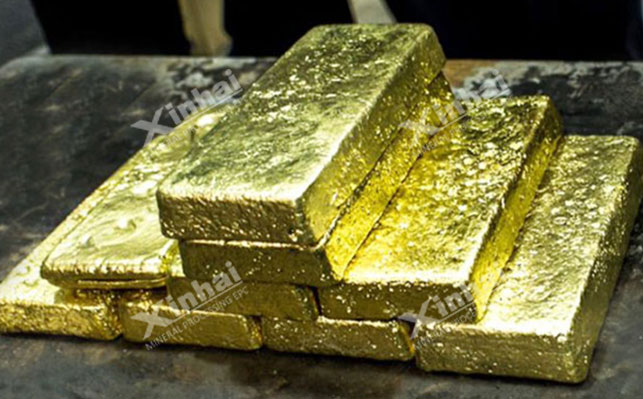
15311826613
Click to add WeChatWith the continuous development and utilization of gold mine resources in my country, gold mine resources that are easy to mine, high grade and good in selectivity are gradually decreasing. For the sustainable development of my country's mineral resources, China has begun to pay attention to difficult-to-process gold mines, hoping to obtain better gold resources from such gold mines.

In this type of ore, gold is often in the form of fine particles that are wrapped in difficult-to-treat Among the infiltrated mineral particles, the treatment process is relatively complex. At present, these mineral processing methods are suitable for selecting difficult-to-process gold ores.
Roasting has always been an important method for processing refractory gold, even for refractory gold ores containing organic carbon. It is said that roasting can also achieve better gold recovery rates. Roasting as a pretreatment operation before cyanidation has a history almost as long as cyanide itself.
Before the advent of the cyanidation process, refractory gold ores were smelted and treated with lead or copper collectors to capture the precious metals, or by chlorination.
In the early days, wet grinding was used for this type of ore, but the grinding particle size requirements were very high. In addition, because this type of ore has a high clay content, it was uneconomical to use wet grinding, so dry grinding was chosen. , using semi-autogenous grinding to complete.
While current gold ore or gold concentrate roasters use airflow and circulating ebullating beds, the principle of flash roasting is also used. It was proposed as a more cost-effective method of large-scale gold ore roasting.
The flash roasting process has been used in the mineral industry to calcine cement, phosphate, alumina and limestone. In the flash roaster, the hot combustion airflow enters the bottom of the satin burning chamber through the throat, and the raw materials are directly fed into the hot airflow from above. Small particles are immediately sucked in and react, while larger particles fall in the direction and are Here, the high-speed airflow is inhaled and reaches a balance with the thin spray layer inside the calcining chamber.
Therefore, the function of the calcining chamber is a back-mixing reactor for larger particles and a plug-flow reactor for smaller particles. To evaluate the effect of gas suspension satin burning furnace on roasting gold ore.
Flash roasting is a suspension system, and the materials are processed in the air flow, so the residence time is very short, usually only a few seconds. The short stay reduces the likelihood that the gold will become encased in iron oxide.
Wet pressure oxidation at low temperature is reasonable from the perspective of processing engineering design and operation, but when the temperature There are also some unique problems when reaching 160°C. Mineral identification of sulfide ores shows that gold is mainly closely related to the mineralization of pyrite, marcasite, arsenic or arsenic pyrite.
Importantly, most gold is associated with a range of fine-grained iron- and arsenic-bearing sulfide minerals. The economic indicators of low-temperature (160°C) pressure oxidation, high-temperature (200°C) pressure oxidation and roasting are very close.
Mechanically, particle aggregation retards the oxidation process of sulfide. Larger particles settle in the autoclave, causing differences in gold content between the autoclave feed and discharge. Small particles are discharged from the autoclave, resulting in low gold recovery from cyanidation. Granulation at 160°C requires changing operating conditions to oxidize sulfide to sulfate without forming elemental sulfur. This has been accomplished by raising the operating temperature to 170 to 180°C while maintaining a local partial oxygen pressure of 689 kPa. Making these changes eliminated particle formation and increased gold recovery to the level of a small laboratory trial, albeit at higher operating temperatures and pressures.
Since a large amount of tailings is discarded in advance, the equipment processing capacity of subsequent processes is greatly improved.
The above are three new gold ore beneficiation processes, which are mainly aimed at the separation of difficult-to-treat gold ores. In the actual mineral processing plant, no matter whether it is easy to separate gold or difficult to separate gold, it is necessary to conduct mineral processing test analysis, because the ore properties and mineralization conditions of each gold mine are different, and copying the process will not only fail to obtain good recovery, It is very likely that there will be no return on investment. Through experimental analysis, designing a gold ore beneficiation process is an ideal solution to obtain first-class reports.